- About Us
- Bearings
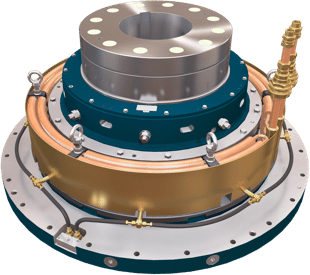 Vertical Bearings
Vertical Bearings
- AV Series
AV
LV SeriesLV
MV SeriesMV
V SeriesV
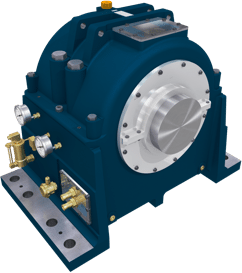 Horizontal Bearings
Horizontal Bearings
- HD Series
HD
IH SeriesIH
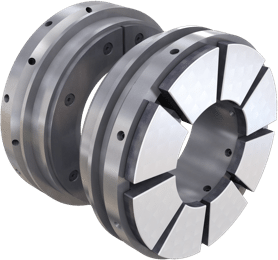 Tilting Pad Bearings
Tilting Pad Bearings
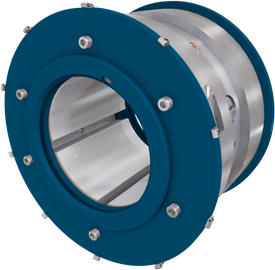 Journal Bearings
Journal Bearings
- Journal Pad Units
Journal
 Thrust Bearings
Thrust Bearings
- SE Series
SE
Omega EqualisedOmega
OmegaOmega
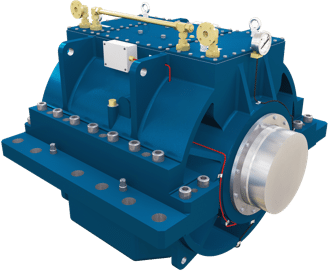 Marine Bearings
Marine Bearings
- Marine Gearbox Internals
Marine
Marine Propulsion Motor
and Generator BearingsEnter your email to download the full paper
"*" indicates required fields
Outline
Home > Developments in PTFE Faced Thrust Bearings for use in Vertical Pump ApplicationsDevelopments in PTFE Faced Thrust Bearings for use in Vertical Pump Applications
SJ Dixon, P Bruce and JD Waggott, Michell Bearings, UK
Abstract
This paper outlines recent work undertaken to determine if PTFE technology, normally employed for large thrust pads, can be successfully used for small pad sizes operating across typical vertical pump speed ranges. Two sets of 80 mm thrust pads, one with offset pivots and the other centrally pivoted, were tested at sliding speeds between 2.5 metres/sec and 21.2 metres/sec with specific loads up to 7MPa. Results demonstrate that small PTFE faced thrust pads can sustain significantly higher thrust loads than the equivalent sized whitemetal pads. The potential advantages of using PTFE faced thrust pads in pump applications are discussed.
Introduction
Polytetrafluoroethylene (PTFE) is now well established in the hydro industry where it has been used as a thrust bearing lining material since the 1970’s (1). PTFE thrust bearing technology was originally used in the former Soviet Union to overcome persistent hydrogenerator bearing failures. By 1990 the vast majority of hydro-electric power stations in Russia had been fitted with PTFE faced thrust bearings (2). Since then much work has been undertaken (3, 4, 5, 6, 7) to understand the performance of PTFE thrust pads.
Typically the advantages of PTFE in large thrust pad applications are one or more of the following:
- Higher load carrying capability: Specific loads in excess of 10MPa are cited (6, 7) and certainly Michell Bearings has thrust pads operating in service at 6.3 MPa.
- Reduced thermal crowning: This is an advantage in large thrust pads for hydro applications which need careful design to keep pad distortion to a minimum. PTFE is an insulator, so the thermal gradient through the thickness of the pad is lower, resulting in a flatter operating surface (6, 7).
- Higher starting load capability: Michell Bearings has tested the breakaway capability of PTFE thrust pads under specific loads of 7MPa (8) and supplied bearings for Pelton turbine application with starting loads of up to 6.2 MPa.
- Durability: PTFE faced thrust pads have proven successful in highly misaligned conditions where whitemetal faced pads have previously failed5). In addition, service life of more than 20 years for a single set of pads is reported (8), with the pads undergoing 12-13 start/stops per day.
Today, the current performance and reliability of PTFE technology is such that many large machines have been designed and built with PTFE faced pads as the first choice.
ACCESS FULL PAPERRecommended articles
PTFE Faced Thrust Bearings – An OEM’s Viewpoint
PTFE Faced Journal Bearing Technology for Marine Propulsion Applications
PTFE Faced Bearings; Thissavros – A Case Study
PTFE Faced Bearings for Marine Propulsion Applications
Michell Bearings
Waldridge Way,
Simonside East Industrial Park,
South Shields,
NE34 9PZ.Tel: +44 (0) 191 273 0291
Email: sales@michellbearings.com
Email: hrteam@britishengines.com
Email: recruitment@britishengines.com© Michell Bearings.
Registered Office Address: 11 Glasshouse Street, St Peter's, Newcastle upon Tyne. NE6 1BS. Company registered in England and Wales no. 9390648

 PTFE Bearings
PTFE Bearings